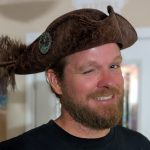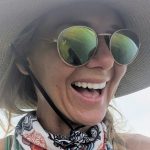GOOD NAUTICAL ON THE WEST COAST OF THE BAJA: BAHIA SAN QUINTIN
GOOD NAUTICAL ON THE WEST COAST OF THE BAJA:
BAHIA SAN QUINTIN, MEXICO 
30° 23.7384′ N, 115° 55.5760′ W
Posse members on the West Coast are beginning to set their sights on the southbound journey. Consider a stopover in Bahia San Quintin on the west cost of the Baja Peninsula. Whale watching, sport fishing and fantastic seafood bring tourists to San Quintin. Oysters, mussels and abalones are harvested from the crystal clear waters of the bay so please avoid dumping waste of any kind overboard. The lagoon provides great opportunities for dinghy exploration and the remains of an abandoned British colony lie in the shore of the inner bay.

Anchorage
The anchorage on the east side of the bay is open to the SW and feels quite exposed with surf breaking even a mile offshore. Anchor on a sandy bottom in 5-10m just outside the shoal line which is marked by small breakers.
https://goodnautical.com/mexico-pacific/anchorage/bahia-san-quintin
Bahía San Quintín, located on the Pacific coast of Baja California, Mexico, is a hidden gem for sailors seeking an authentic and tranquil maritime adventure. This natural harbor, about 190 nautical miles south of San Diego, offers a unique blend of pristine beauty, rich marine life, and a glimpse into the unspoiled wilderness of Baja California.
Geography and Navigation
Bahía San Quintín is a broad, sheltered bay framed by volcanic hills and sandy beaches, providing excellent protection from the Pacific’s swells. The bay is about 6 miles wide and 11 miles long, offering ample anchorage space with good holding ground in sand and mud. The entrance to the bay can be tricky, especially for first-time visitors, due to shifting sandbars and shallow areas. It is advisable to enter during daylight with good visibility and to use updated nautical charts. Depth sounders and GPS are essential tools for navigating safely into the bay.
Weather and Climate
The climate in Bahía San Quintín is typically mild and dry, with average temperatures ranging from the mid-50s to the mid-70s Fahrenheit. The area enjoys a Mediterranean climate, with dry summers and mild, wet winters. Fog can be a common occurrence, especially in the mornings, so sailors should be prepared for reduced visibility at times. Winds are predominantly from the northwest, providing favorable sailing conditions for those heading south.
Flora and Fauna
Bahía San Quintín is a haven for nature lovers. The bay and its surrounding areas are home to a diverse array of wildlife. Birdwatchers will be delighted by the presence of numerous bird species, including the endangered black brant, as well as various shorebirds and waterfowl. The bay’s waters teem with marine life, making it a popular spot for fishing and snorkeling. Anglers can expect to catch species such as halibut, sea bass, and yellowtail.
Activities and Attractions
For sailors looking to stretch their legs, the area offers plenty of onshore activities. The surrounding landscape is perfect for hiking, with trails leading through volcanic rock formations and coastal dunes. The nearby fishing village of San Quintín provides a glimpse into the local culture and an opportunity to sample fresh seafood, particularly the region’s renowned oysters and clams. Visiting the local oyster farms can be a fascinating experience, offering insights into the aquaculture practices that sustain the local economy.
Services and Facilities
While Bahía San Quintín is relatively undeveloped compared to more popular tourist destinations, it offers essential services for visiting sailors. There are a few basic facilities, including fuel, provisions, and some repair services available in the village of San Quintín. It is advisable to stock up on necessary supplies before arriving, as options may be limited. For those needing more extensive services, the port of Ensenada, located about 130 nautical miles to the north, provides a wider range of amenities, including marinas, chandleries, and professional repair services.
Conservation and Sustainability
Bahía San Quintín is part of a protected natural area, and visitors are encouraged to respect the environment and practice sustainable boating. Efforts to preserve the bay’s natural beauty and biodiversity are ongoing, and sailors can contribute by following Leave No Trace principles, minimizing waste, and avoiding damage to sensitive habitats such as seagrass beds and bird nesting areas.
Conclusion
Bahía San Quintín offers a serene and rewarding destination for sailors looking to explore the less-traveled waters of Baja California. Its natural beauty, abundant wildlife, and tranquil atmosphere make it an ideal spot for those seeking to experience the unspoiled charm of Mexico’s Pacific coast. Whether anchoring in its calm waters, exploring its diverse ecosystems, or engaging with the local community, sailors will find Bahía San Quintín to be a memorable and enriching part of their maritime journey.
Landing on the Beach in High Surf
Landing on the beach in high surf at Bahía San Quintín can be challenging and requires careful planning and execution. The key to a successful landing is timing and understanding the wave patterns. It is essential to observe the surf for a period to identify any lulls between sets of larger waves. When ready, approach the beach at a 90-degree angle, maintaining enough speed to stay ahead of the breaking waves. As you near the shore, reduce speed and be prepared to jump out and pull the dinghy up the beach swiftly to avoid it being swamped by incoming waves. Ensure all equipment and passengers are secure, and wear appropriate safety gear such as life jackets. Landing in high surf can be risky, so if conditions seem too dangerous, it might be best to wait for calmer seas or find a more sheltered landing spot within the bay.
MEET THE FLEET: SV WINDSONG - Erick & Jenny
MEET THE FLEET: SV WINDSONG
Erick & Jenny

It was a lifelong dream of mine to sail my own boat to beautiful remote places in search of perfect, empty surf breaks, enjoying fishing and other adventures along the way. Around 2007, after my first few years of office work after college, I decided to chase the dream and see if I could make it a reality. Having no prior experience, I took a few sailing lessons to see if it was something I would enjoy and was immediately hooked. Instead of taking a sensible route towards boat ownership, I dove headfirst into buying a derelict project boat and spent the next 10 years fully rebuilding Windsong, a 1975 Downeaster 38 Cutter, into a practically brand new (yet still old) boat. Having little to no relevant skills, I had to learn everything as I went, which in the end gave me a great set of knowledge and experience concerning the ins and outs of the boat.
Once Windsong was as complete as she could be in late 2019, my partner Jenny and I got married, and within a month we moved aboard and set sail for our honeymoon. Leaving from our home port, St. Augustine, FL, and bounced our way down the Florida intercoastal waterway to get a feel for life on the move and at anchor. We started our journey with our senior boxer dog, Koda, who took to cruising life with great happiness as she was able to spend all day, every day with us. After a month or so of Florida coastal cruising, we crossed over to the Bahamas and island hopped for the next few months until Covid shut most of the country down. We sailed back to the US and spent the next summer between South Carolina and Florida. Unfortunately, Koda was not long for the world at this time, so she was put to rest. While it was a devastating moment for us, it did free us up to sail greater distances. We went back to the Bahamas and spent a full season sailing from the Abacos all the way down to Great Inagua. From there we crossed directly to Panama on our first long passage across the Caribbean Sea.

We spent almost two years in Panama, mostly in Bocas Del Toro on the Caribbean side. With great surfing, protected anchorages, affordable living, and fantastic people; it was hard to not stay forever. However, we decided our sailing days were not done, and wanted to cross the Pacific and experience the remote South Pacific tropics. We geared the boat up a bit more, and once all was ready, we first crossed the Panama Canal and set sail to the Galapagos. We applied for and received a 1-year visa for French Polynesia, so after 24 days at sea from the Galapagos we arrived in the Marquesas and then took our time going through the French Polynesian islands, savoring each bit along the way. One year later, we set sail from French Polynesia and with some stops along the way we are now in Fiji, where we will spend the rest of the 2024 cruising season. We do not know where the winds will take us next, but we are looking forward to exploring these lovely islands for as long as they captivate us.


SV WINDSONG  Erick & Jenny - Downeaster Cutter 38′
Erick & Jenny - Downeaster Cutter 38′






